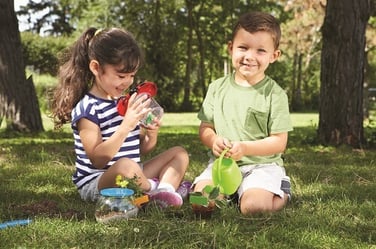 When we think about creativity, the arts come to mind, whether it’s writing, painting, drawing or dancing. While those are unquestionably creative endeavours, creativity covers all domains of thinking and learning. This includes strategising, flexible thinking and problem-solving. Now more than ever, our society can benefit from people who use creativity to solve problems, communicate with others and adapt to a variety of situations.
When we think about creativity, the arts come to mind, whether it’s writing, painting, drawing or dancing. While those are unquestionably creative endeavours, creativity covers all domains of thinking and learning. This includes strategising, flexible thinking and problem-solving. Now more than ever, our society can benefit from people who use creativity to solve problems, communicate with others and adapt to a variety of situations.
Our creative skills, as with other abilities, develop with nurturing. One of the time-tested ways to fuel creativity is spending time in nature. Outdoor environments create the hands-on play that nurtures children’s creative problem-solving abilities as they face real-life challenges.
Movement Keeps the Brain Active
The brain is at its optimal state when the body is in motion. Neurologist Etienne van der Walt says engaging in physical activity is one of the most effective ways to keep the brain healthy. A 2014 American study learned that children who were more physically active had superior ‘attentional inhibition’, which refers to the ability to block out irrelevant information and concentrate on a particular task.
Outdoor learning environments offer ample room for active play, keeping the mind sharp for prolonged periods and contributing to the development of cognitive skills – an important attribute of creativity.
Supporting Exploration and Courage
Well-designed outdoor learning environments inspire children’s movement and present opportunities for decision-making. These spaces provide young children with avenues for thinking, rethinking, investigation and refining their understanding of the world.
Richard Louv, author of Last Child in the Woods: Saving Our Children from Nature-Deficit Disorder, expressed the need to bring the outdoor experience back into children’s lives. The richer the network for play environments, the more opportunities children have to develop their confidence, resilience and creativity – all qualities of healthy child development.
The environment should be a place where children can explore, play with ideas and be courageous in their discoveries. This play-learn environment can have a combination of climbers and trestles, swings and tunnels, and playhouses.
Young children are inquisitive and eager to learn, and natural habitats are their world. Creativity flourishes when children connect with the flora and fauna around them, cultivating a healthy mindset for lifelong learning.
Play‘n’Learn offers a wide range of outdoor play products to help you design your outdoor play environment. Browse our full range or contact us to discuss your needs.



